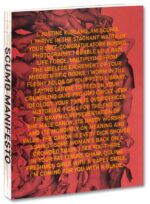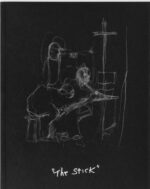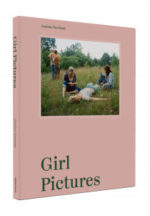Kurland Justine
-
Justine Kurland : Highway Kind
Justine Kurland et son jeune fils, Casper, ont voyagé dans leur fourgonnette personnalisée, allant au sud en hiver et au nord en été, sa vie d’artiste et de mère équilibrée entre le besoin de routine et le désir de liberté et de surprise. Les intérêts de Casper, en particulier dans les trains, et plus tard dans les voitures, et ceux qu’il se lie d’amitié en cours de route déterminent souvent le sujet de Kurland. Il apparaît à différents âges dans le travail, contre des vues ouvertes et parmi les sous-cultures de trains-trémies et de vagabonds autour d’eux. La vision de Kurland est à la fois brute et romantique, idyllique et dystopique.
Justine Kurland and her young son, Casper, have traveled in their customized van, going south in the winter and north in the summer, her life as an artist and mother finely balanced between the need for routine and the desire for freedom and surprise. Casper’s interests-particularly in trains, and later in cars—and those he befriends along the way often determine Kurland’s subject matter. He appears at different ages in the work, against open vistas and among the subcultures of train-hoppers and drifters around them. Kurland’s vision is in equal parts raw and romantic, idyllic and dystopian. -
Justine Kurland : This Train (Signé)
Exemplaire Signé / Signed Copy.
Édition limitée à 1000 exemplaires signés dont un tirage signé et numéroté (20,3 x 16,4cm) fait main par l’artiste.
Limited edition of 1,000 signed copies including a signed and numbered print (20.3 x 16.4cm) handmade by the artist.
Cette nouvelle publication de Justine Kurland présente deux récits entrelacés tirés des road trips qu’elle a effectués aux États-Unis avec son jeune enfant entre 2005 et 2010.
This new publication from Justine Kurland presents two interwoven narratives drawn from the road trips across the United States that she undertook with her young child between the years 2005 and 2010.
-
-
Justine Kurland : The Stick
« The Stick » positionne le dernier travail de Justine Kurland en conversation avec les peintures de son défunt père.
The Stick tisse la dernière série de photographies en noir et blanc de Justine Kurland avec les peintures de nature morte de son défunt père Bruce Kurland. Les deux œuvres, ponctuées de poèmes de Lisa Jarnot, ancienne amoureuse de Bruce Kurland, mettent en scène un nouveau genre d’album familial, plein de reliques étranges et d’art mercuriel qui relient père et fille. Des fenêtres couvertes de planches, un chien enceinte, des vulves mâcheuses et le gode-ceinture d’un ancien partenaire sont en conversation avec les inventions compositionnelles surréalistes de Bruce Kurland : des branches fleuries drapées de bandes de bacon cru, une pêche mûre et clivée qui semble léviter contre un mur bleu, et des oiseaux dématérialisés dans l’espace. Vues en tandem, les photographies prennent l’étrangeté onirique des peintures et le symbolisme des natures mortes trouve la sensualité incarnée dans les photographies.
L’œuvre de Justine Kurland dans The Stick est la première qu’elle publie depuis la vente de son van il y a quatre ans et qu’elle renonce aux road trips pour lesquels elle est connue. Cette série se déroule dans son appartement à New York, sa ville natale de Fulton, New York, et la maison de sa mère en Virginie rurale. Kurland envahit des fragments de cette vie avec des allusions à l’œuvre de Carolee Schneemann, Betty Tompkins, Judy Chicago, Hannah Wilke, et Emily Roysdon. Trois des tableaux de son père – un petit portrait de lui-même portant un pot comme chapeau, ressemblant à la mère de Justine Kurland, et son autoportrait final avant sa mort – apparaissent dans son œuvre, reliant des tranches de vie disparates, des espaces qui sont et étaient autrefois considérés comme sa maison, et les notions de famille à travers le temps et le lieu.
« The Stick » positions Justine Kurland’s latest work in conversation with her late father’s paintings.
The Stick weaves together Justine Kurland’s latest series of searingly intimate black-and-white photographs with her late father Bruce Kurland’s still life paintings. The two bodies of work—punctuated by poems by Lisa Jarnot, a former lover of Bruce Kurland’s—enact a new kind of family album, full of strange relics and mercurial artistry that link father and daughter. Boarded-up windows, a pregnant dog, chewing gum vulvas, and a former partner’s strap-on are in conversation with Bruce Kurland’s surreal compositional inventions—flowering branches draped with strips of raw bacon, a ripe cleaved peach seemingly levitating against a blue wall, and dematerialized birds dangling in space. Seen in tandem, the photographs take on the dreamlike uncanniness of the paintings and the symbolism of the still lifes finds embodied sensuality in the photographs.
Justine Kurland’s work in The Stick is the first she has published since selling her van four years ago and renouncing the road trips she is known for. This series unfolds across her apartment in New York City, her hometown of Fulton, New York, and her mother’s home in rural Virginia. Kurland invaginates fragments of this life with allusions to the work of Carolee Schneemann, Betty Tompkins, Judy Chicago, Hannah Wilke, and Emily Roysdon. Three of her father’s paintings—a diminutive portrait of himself wearing a pot as a hat, a likeness of Justine Kurland’s mother, and his final self-portrait before his death—appear in her work, linking disparate slices of life, spaces that are and were once called home, and notions of family across time and place.
Bruce Kurland (1938–2013) studied at the Arts Students League and the National Academy School of Fine Arts in New York City. A retrospective of his work, Bruce Kurland: Insight into Still Life, was organized by the Burchfield Center for Western New York Art in 1983. His work is held in the collection of the Smithsonian American Art Museum, Washington, D.C.
Justine Kurland (b. 1969) studied at the School of Visual Arts and Yale University. Her work has been on view in recent exhibitions at Higher Pictures Generation, New York; UB Art Galleries, Buffalo, NY; Whitechapel Gallery, London; and Crystal Bridges Museum of American Art, Bentonville, Arkansas. Her work is in the public collections of the Museum of Fine Arts, Montreal, Canada; the National Gallery of Art, Washington, D.C.; and the Whitney Museum of American Art, New York, among others.





